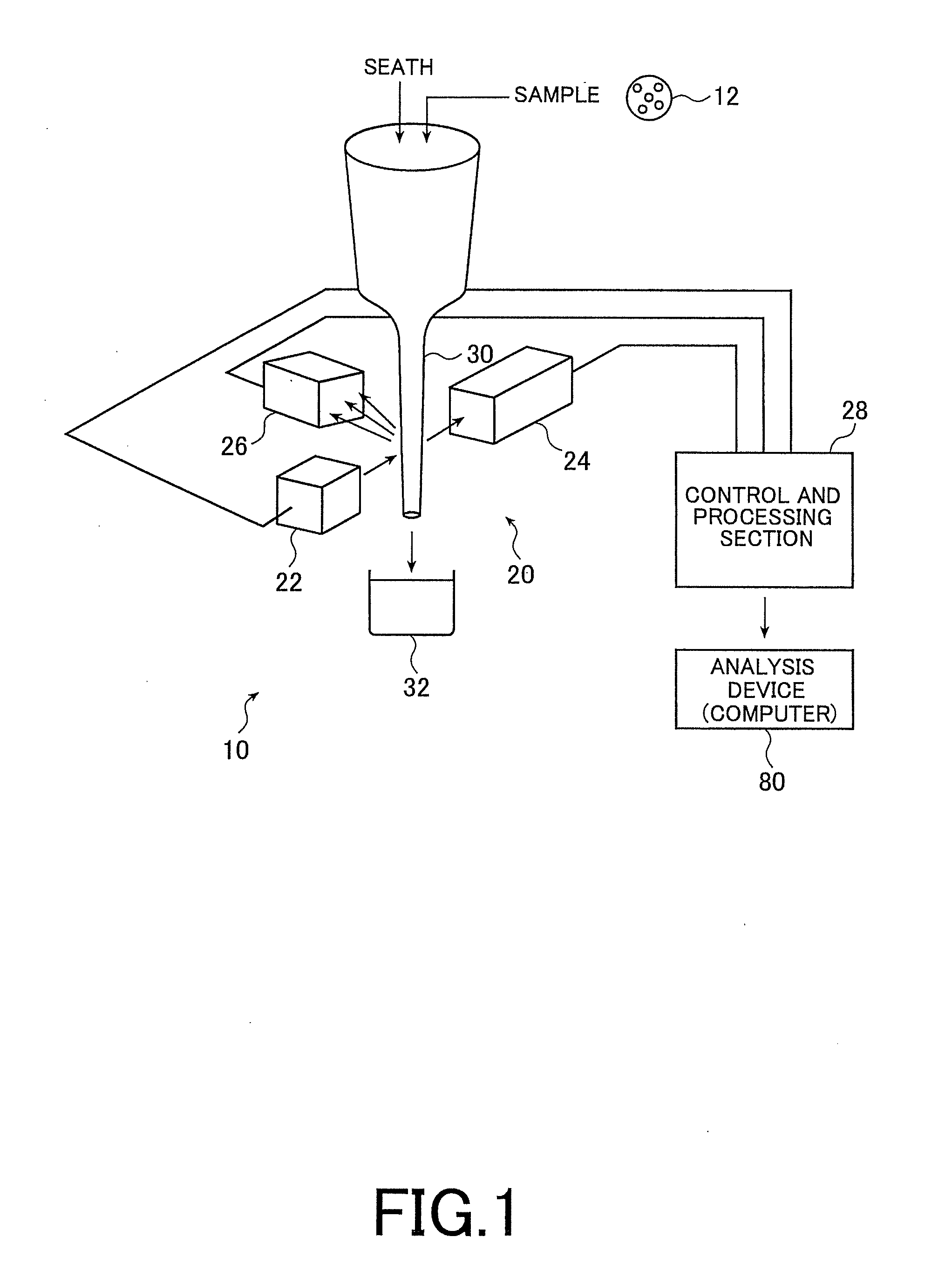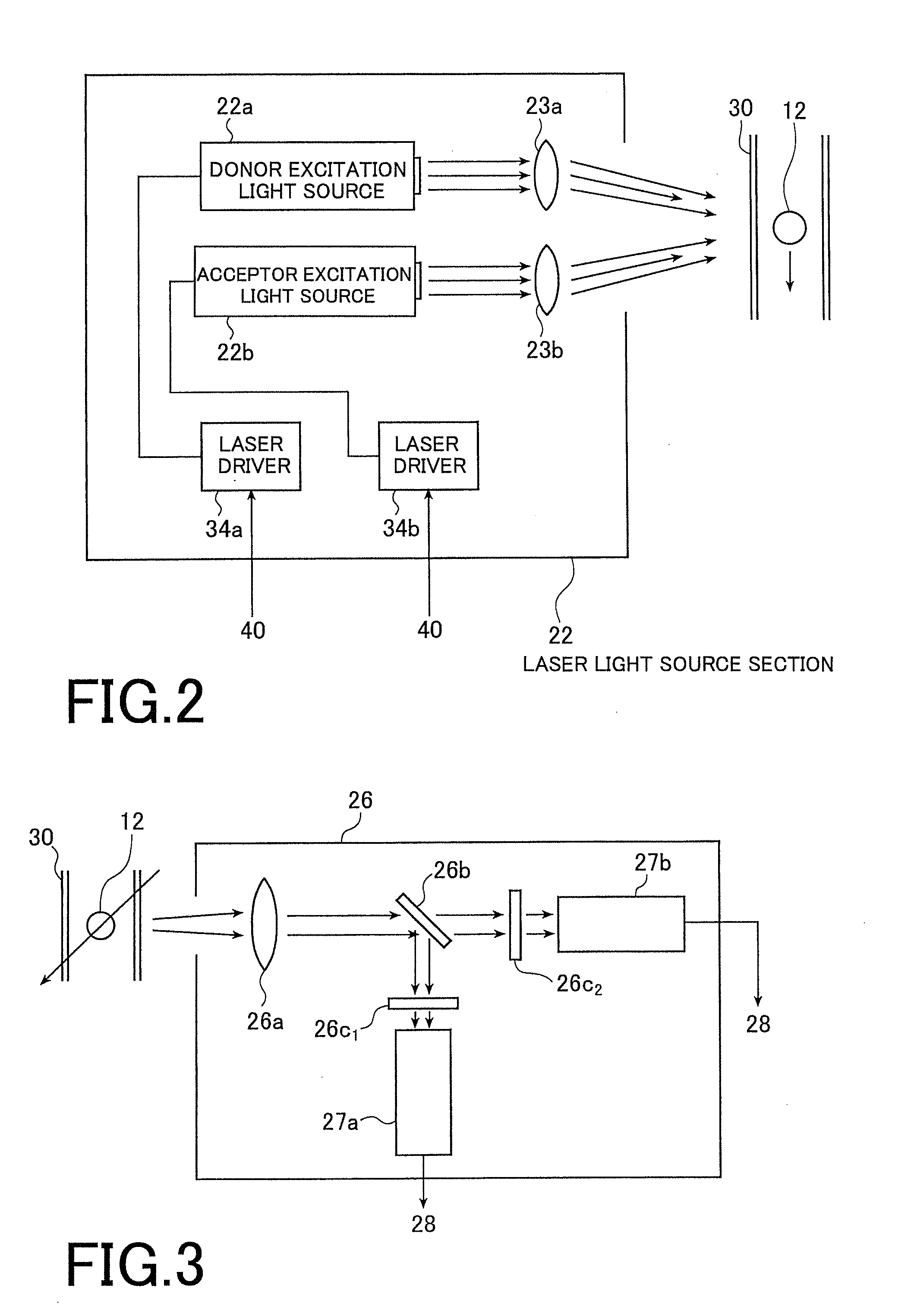Fret detection method and device
- Summary
- Abstract
- Description
- Claims
- Application Information
AI Technical Summary
Benefits of technology
Problems solved by technology
Method used
Image
Examples
Embodiment Construction
[0068]A method of and a device for detecting FRET of the present invention will be hereinafter explained in detail.
[0069]FIG. 1 is a schematic configuration diagram of a flow cytometer 10, which is an embodiment of a FRET detection device of the present invention.
[0070]The flow cytometer 10 is configured to determine whether or not energy of a first molecule (donor molecule) transfers to energy of a second molecule (acceptor molecule) by receiving fluorescence emitted from the acceptor molecule when the acceptor is excited by fluorescence emitted from the donor molecule. The donor molecule emits fluorescence when being excited by laser irradiation. To detect the energy transfer, intensity modulation is executed for lasers to be irradiated respectively to the donor molecule and the acceptor molecule at predetermined frequencies. The present invention has a feature that FRET generation is detected by measuring phase delays of fluorescences to be emitted in response to laser irradiatio...
PUM
 Login to View More
Login to View More Abstract
Description
Claims
Application Information
 Login to View More
Login to View More - R&D
- Intellectual Property
- Life Sciences
- Materials
- Tech Scout
- Unparalleled Data Quality
- Higher Quality Content
- 60% Fewer Hallucinations
Browse by: Latest US Patents, China's latest patents, Technical Efficacy Thesaurus, Application Domain, Technology Topic, Popular Technical Reports.
© 2025 PatSnap. All rights reserved.Legal|Privacy policy|Modern Slavery Act Transparency Statement|Sitemap|About US| Contact US: help@patsnap.com



